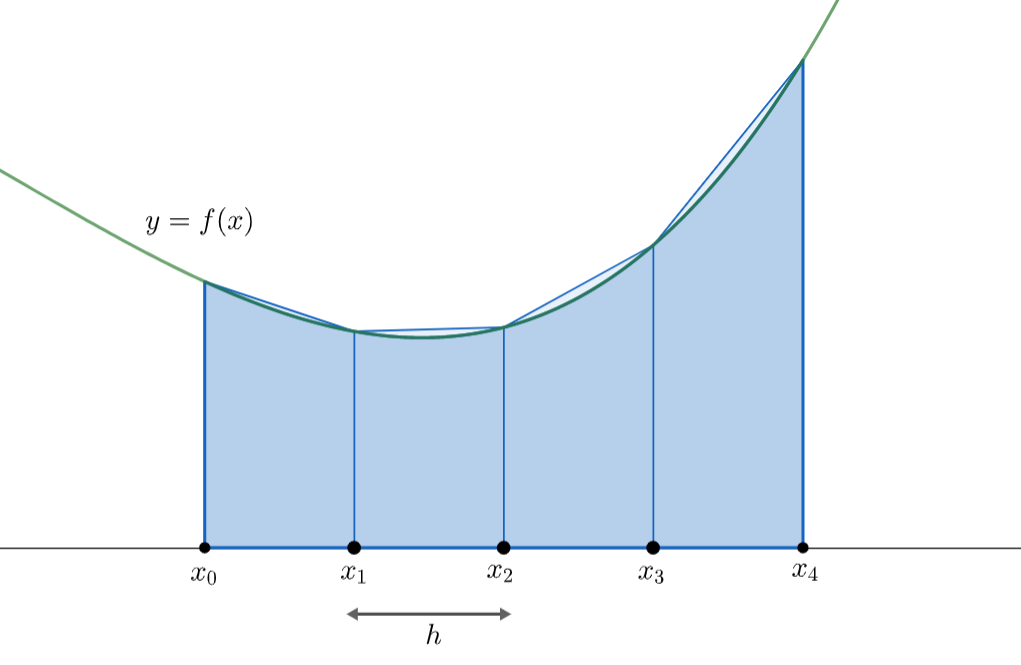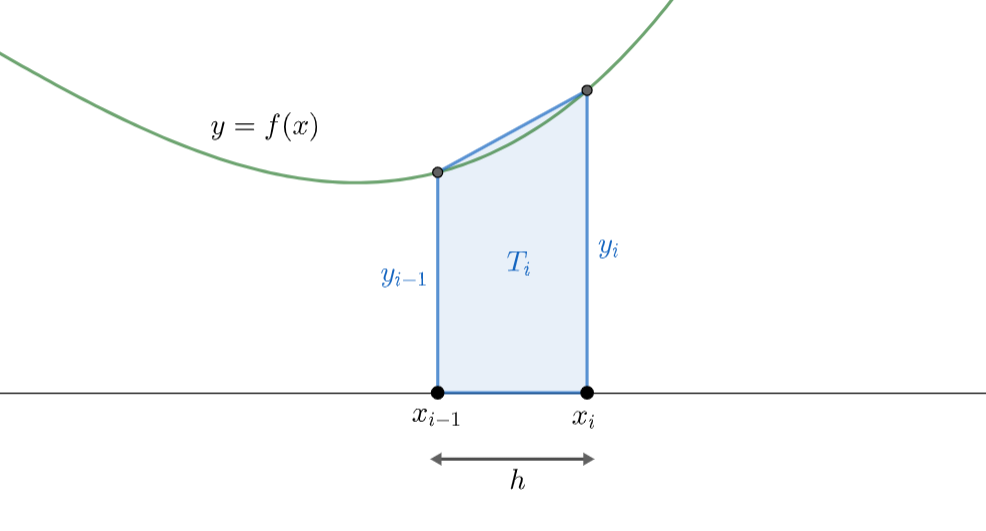Consider the area of the shape below:

This area is bound between
the line
the line
the line
(the axis) the curve
For this area, we use the special notation
This notation tells use where the area starts (
The trapezium rule
In the image below, we show how

The base of each trapezium is
Let's take a look at one of these trapezia

The area of the trapzium is
and so the whole area can be approximated by
This last line is the most convenient form of the trapezium rule.
More generally, using
where
Let's see how to use this in practice.
Using the trapezium rule with
giving your answer to